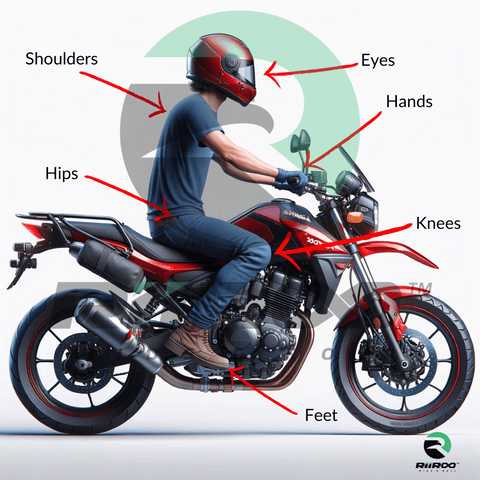
Published: August 7, 2024
Updated: March 26, 2025
Dirt bikes are rugged motorcycles built for off-road adventures—ready to tackle mud, sand, or rocks!
Here are 10 mind-blowing facts about dirt bikes in 2025 to fuel your excitement.
What’s a Dirt Bike? A specialized motorcycle for off-road use, with lightweight frames, long-travel suspension, and knobby tyres for rough terrains.
Dirt Bike Basics
Dirt bikes are designed for off-road adventures—not street-legal, they’re perfect for trails, jumps, and races.
Unlike regular motorcycles, they have narrower, knobby tyres, lighter frames (often plastic), and narrower seats for short, rugged rides—ideal for trails.
10 Amazing Dirt Bike Facts
1. Lightweight Build
Dirt bikes are super light for agility—easy to maneuver on tricky terrains like a featherweight champ.
2. Off-Road Ready
Built for unpaved surfaces—mud, sand, rocks—they’re the SUVs of motorcycles. Find UK riding spots.
3. Tough Terrain Design
Long, springy suspensions and knobby tyres let them conquer the roughest trails.
4. Budget-Friendly
Entry-level dirt bikes start under £2,000—affordable fun for all! Should you buy one?
5. Not Street-Legal
Dirt bikes lack headlights and signals, so they’re not allowed on public roads—stick to trails!
6. Full-Body Workout
Riding demands strength, endurance, and agility—a mix of cardio, lifting, and acrobatics!
7. Century-Old Sport
Dirt bike racing started in 1924 in the UK—learn its history.
8. Global Popularity
Events like motocross and supercross draw thousands worldwide—check out kids’ events.
9. Risky Thrills
Dirt biking can be dangerous—crashes and injuries are real risks, so gear up and ride smart.
10. Outdoor Freedom
Dirt bikes let you explore hidden trails and scenic spots—your pass to the great outdoors!
Types of Dirt Bikes
Trail Dirt Bike
Versatile and beginner-friendly, with softer suspension for wooded trails.
Dual Sport Bike
Street-legal and off-road capable, perfect for mixed riding.
Motocross Dirt Bike
Built for speed and jumps in closed-course races—high performance!
Enduro Bike
Designed for long-distance off-road races, with larger fuel tanks.
Child Dirt Bike
Smaller, lighter, and less powerful—ideal for young riders to learn safely.
Electric Dirt Bike
Emission-free, quiet, with instant torque—explore electric options.
Petrol Dirt Bike
Classic fuel-powered bikes with that iconic “braap” sound—what fuel do they use?
The Best Dirt Bike for You
- Beginners: Trail bikes—versatile and easy to handle.
- Mixed Use: Dual sport bikes for on- and off-road.
- Racing: Motocross bikes for speed and jumps.
- Kids: Child dirt bikes, smaller and safer.
- Eco-Friendly: Electric dirt bikes for quiet rides.
Match your bike to your riding style and needs!
Safety Gear
- Helmet: DOT-approved for head protection.
- Gloves: Better grip and hand safety.
- Boots: High-ankle for sprain protection.
- Knee/Elbow Pads: Essential for falls.
Maintenance Tips
- Clean After Rides: Wash with mild soap—check for issues.
- Inspect Tyres: Check pressure and wear.
- Lubricate Chain: Keep it smooth after cleaning.
- Change Oil: Regular oil changes are key.
Environmental Impact
Ride responsibly—stick to trails, avoid wetlands, and consider electric dirt bikes for a greener option. Be a responsible rider.
Legal Requirements
UK
Need a Certificate of Newness, MOT, NOVA declaration, V5 Log Book, insurance, and a license (16+). Private land rules apply.
US
Varies by state—most aren’t street-legal; some require a motorcycle license.
Conclusion
Dirt bikes are thrilling off-road machines with a rich history and diverse types for every rider.
Gear up, maintain your bike, and explore the wild in 2025!
FAQs
What’s the ideal age to start riding?
Kids can start at 4-6 years on small, electric, or 50cc bikes—check their skills first.
Are dirt bikes safe for kids?
Yes, with supervision, proper gear (helmet, pads), and an age-appropriate bike.
How do I choose the right dirt bike?
Match it to your experience, height, and weight—trail for beginners, motocross for racing.
Can dirt bikes be street-legal?
Yes, with added equipment (headlights, signals) and local approvals—check UK/US laws.
Ready to Ride? 🚀
Loved “What is a Dirt Bike? 10 Mind-Blowing Facts You Didn’t Know?” Want more bike insights?
Visit RiiRoo.com or chat live with us for ride-on fun!








Share:
What is a Dirt Bike Powerband? 5 Facts for 2-Stroke and 4-Stroke Riders in 2025
What Does Choking A Dirt Bike Do?